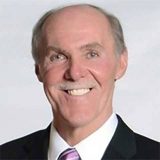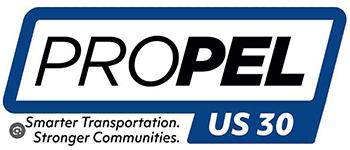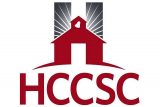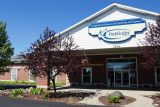Area leaders call for improvements to U.S. 30
General
 Posted by: Steve Kimmel 9 months ago
Posted by: Steve Kimmel 9 months ago

Source: INside Indiana
Several state representatives, mayors, city officials and business leaders gathered Wednesday in Warsaw to discuss the safety and economic implications of not modernizing the 155-mile stretch of U.S. 30 between Fort Wayne and Valparaiso.
The U.S. 30 Summit was organized by members of the U.S. 30 Coalition, an advocacy group working to upgrade U.S. 30 to a freeway from Valparaiso to the Ohio line. Members have been meeting regularly since 2013 to discuss the necessary changes.
Industry leaders along the axis categorically stated that they could not commit to remaining in Warsaw, known as the Orthopedics Capital of the World, if changes were not made to the infrastructure, they depend upon to ship their goods out to their customers.
In one panel, representatives from Warsaw-based Zimmer Biomet Holdings, Fort Wayne-based Steel Dynamics Inc. and the Regional Chamber of Northeast Indiana discussed the ways in which the current state of U.S. 30 is impeding business activities and economic growth for the region and Indiana as a whole.
“First of all, I want to point out that it is a little bit of our effort to influence the executive branch and on how to deal with our region,” Regional Chamber of Northeast Indiana president Bill Konyha said. “Our businesses have a supply chain extending throughout Indiana into Michigan, Illinois, Ohio, and U.S. 30 is critical to the success of our supply chain. It is critical even for agriculture. It’s critical for our workforce, and it’s essential to the delivery system.”
Stemming largely from U.S. 30 Coalition advocacy, INDOT launched its Planning and Environment Linkages studies, known as ProPEL U.S. 30 and ProPEL U.S. 31, in 2022 to evaluate the transportation needs of the corridors.
The next phase of the studies will include evaluating segments of the U.S. 30 corridor and designing possible alternatives. The initial phases addressed major infrastructure changes and issues to address and considered alternatives in the first two stages of the study.
Konyha said Northeast Indiana employs almost 400,000 people in the manufacturing industry, receiving over $8.5 billion in wages and over $260 million paid yearly in state income taxes. With numbers like these, Konyha said improvements on the U.S. 30 corridor should be a priority for the government.
“I ran an agency for the state of Indiana and we hop to the orders of the executive branch,” Konyha said. “Unless the executive branch identifies something as a priority, it will linger forever as a non-priority or a priority only in the minds of those who think it’s a priority.”
Zimmer Biomet president Ivan Tornos also voiced his concerns regarding long-term plans for his company to remain in Warsaw. With over 20,000 direct employees and an additional 40,000 indirectly, Tornos remarked that the state of U.S. 30 was a constant consideration for the company that does business in 125 countries worldwide.
“I’ll be meeting with the governor again. We won’t be talking about taxes. We won’t be talking about regulatory changes. We’re not going to be talking about anything other than U.S. 30,” Tornos said. “We want to be in Warsaw, Indiana, for the next 100 years, but we cannot make the commitment to be here long term, if we don’t resolve this.”
Chris Graham, vice president at Steel Dynamics revealed that his company recently passed Indiana over for additional investment and expansion because of the road infrastructure.
“Steel Dynamics recently committed almost $3 billion to a facility in Columbus, Mississippi, for an aluminum plant,” Graham said. “We did not consider this area. We look at infrastructure. We look at transportation. We look at power. Safety is hugely important. We have at least two employees who have been in life altering accidents, where they were in a wheelchair for a couple of years at County Road 800 & U.S. 30.”
Graham added that Steel Dynamics supports turning U.S. 30 into a freeway because the benefits outweigh the cost tremendously.
“People made smart decisions 50 years ago; we need to do the same,” Graham said. “Steel Dynamics isn’t going to be able to invest much more here until we get some things right.”
Restating how critical the manufacturing industry is, Konyha noted that northeast Indiana is the most manufacturing-intensive region in the state, and congressional districts two and three are the most manufacturing-heavy districts in the United States.
Elected officials and business leaders recounted personal experiences of knowing someone whose life had been tragically affected by accidents on U.S. 30. Industry leaders also noted that traffic on the U.S. 30 corridor had been responsible for a few penalties they had to pay.
Studies have shown that improving U.S. 30 would reduce accidents by 323 and save 18,000 hours of delay per day.
“U.S. 30 is the main conduit our employees travel daily,” Tornos said. “We put their lives at risk, we’ve got to get this resolved.”
Two other panels at the summit included comments from members of the coalition on some of their advocacy efforts and commitments from state representatives to continue working to see improvements become reality.
Categories:
About: Steve Kimmel
You May Be Interested In:
Take Your Business to the Next Level
Call the Chamber and see how we can help you take your business to the next level. You can become an Ambassador, volunteer for our golf outing, attend one of our networking group meetings and more. Keep this site close by for all the happenings in Huntington County.



